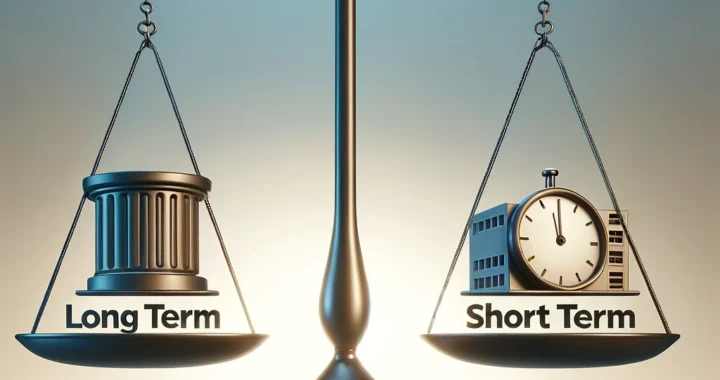In the intricate landscape of commercial real estate, the duration of a lease stands as a pivotal decision, shaping the trajectory of businesses. Unlike residential leases, commercial leases, which can extend from one to ten years, carry distinct complexities. Landlords often favor longer terms, grappling with the challenge of filling spaces efficiently. This article delves into the nuanced world of short, standard, and long-term leases, illuminating the advantages and drawbacks for tenants and landlords alike. Understanding these lease lengths becomes crucial as businesses navigate the delicate balance between flexibility, stability, and negotiation leverage.
Understanding Lease Lengths
Commercial leases, spanning from one to ten years, encapsulate a spectrum of durations that significantly impact both tenants and landlords. The conventional preference for longer leases, often ranging towards a decade, stems from landlords’ inherent challenge of securing tenants for extended periods. Unlike residential agreements, commercial leases involve intricate negotiations influenced by factors beyond rent amounts. Landlords, seeking to recoup investments and navigate potential remodeling requirements, face a delicate dance in enticing businesses to commit to lengthier terms. As we explore the lease landscape, the dynamic interplay between flexibility and stability takes center stage, revealing the intricate considerations that define the commercial leasing arena.
Short-Term Leases
In the realm of commercial real estate, short-term leases, spanning three years or less, emerge as a rarity, creating a distinctive leasing landscape. For tenants, particularly startups, these leases offer unparalleled flexibility, allowing for quick adaptations to changing business landscapes. However, this flexibility comes with its set of challenges. Landlords, often hesitant to commit to shorter terms, face obstacles in finding new occupants swiftly. Here are key considerations for short-term leases:
Advantages:
- Flexibility for businesses anticipating rapid growth.
- Easy scaling up or down in response to market dynamics.
- Swift occupancy of ready-to-move-in spaces.
Disadvantages:
- Limited space customization as landlords seek new tenants.
- Lack of special concessions or perks.
- Repetitive search and negotiation processes for both tenants and landlords.
Navigating the pros and cons becomes crucial, particularly for startups seeking agility in a dynamic business environment.
Standard Leases
Standard commercial leases, typically spanning three to five years, occupy the middle ground between short and long-term commitments. Offering tenants a balance between flexibility and stability, these leases become a negotiation battleground where both parties seek advantageous terms. Here’s a breakdown of standard leases:
Benefits:
- Improved negotiation leverage for tenants.
- Potential for improvement allowances.
- Stability with a predictable business location.
Drawbacks:
- Limited flexibility for significant business changes.
- Constraints on property enhancements.
- The need for potential subleasing if business needs shift.
Navigating the intricacies of standard leases requires a careful evaluation of business goals and client base, influencing the decision-making process for both landlords and tenants. Striking a delicate balance, these leases aim to provide a stable foundation for businesses with a moderate level of negotiation flexibility.
Long-Term Leases
Long-term leases, spanning from five to ten years, represent a commitment that aligns with the vision and stability of established businesses. Offering a spectrum of benefits, these leases are favored by landlords and present enhanced advantages for tenants. Here’s a closer look at long-term leases:
Benefits:
- Enhanced concessions and financial provisions for tenants.
- Customization opportunities with landlords approving significant changes.
- Long-term predictability, allowing businesses to plan ahead.
Drawbacks:
- Extended lease negotiations with intricate details.
- Significant financial commitment for tenants.
- Limited flexibility for rapid business changes.
While the negotiation process may be lengthy, the rewards for businesses with a clear vision and regular clientele can be substantial. Long-term leases offer a sense of security and financial stability, aligning with businesses that prioritize longevity over immediate flexibility.
Comparisons and Considerations
Choosing the right commercial real estate lease involves a comprehensive analysis of short, standard, and long-term options, each catering to distinct business needs. Key considerations in this comparison include:
- Moving Costs: Short-term leases may incur frequent moving expenses, while long-term commitments offer stability.
- Customization: Short-term leases limit customization, whereas long-term agreements provide opportunities for significant changes.
- Financial Stability: Standard leases strike a balance, offering moderate flexibility with predictable financial costs.
Understanding these nuances enables businesses to align their lease choices with their growth plans and financial strategies, ensuring a harmonious fit between lease terms and overarching business objectives.
Importance of Lease Terms
The significance of lease terms extends beyond immediate business considerations to impact property valuation. A key metric in this evaluation is the Weighted Average Lease Term (WALT), measuring the average remaining lease duration. Longer leases contribute to a higher WALT, positively influencing property value. Additionally, lenders often favor properties with longer leases when determining mortgage interest rates. The duration of a lease, therefore, not only shapes a business’s operational landscape but also plays a pivotal role in the broader financial dimensions of property ownership and financing. Understanding this broader perspective adds a layer of strategic foresight to commercial lease decision-making.
Alternatives and Compromises
Commercial lease negotiations offer a realm of flexibility, distinguishing them from rigid residential agreements. Every aspect of a commercial lease, including its duration, is open to negotiation. A notable alternative, especially for stores and restaurants, involves negotiating a short-term initial lease with the option to renew. This structure provides a balance, offering businesses an initial period with the flexibility to renew for an extended duration. Recognizing the negotiable nature of commercial leases empowers tenants to tailor agreements that align precisely with their business objectives and risk tolerance.
Final Considerations
Navigating the intricacies of commercial real estate leases becomes even more crucial for businesses with unique needs. Key considerations in this final stage include:
- Special Needs: Businesses with specific requirements or larger spatial needs may lean towards longer leases.
- Negotiation Complexity: Lease negotiation complexity often correlates with the length of the lease, requiring careful attention to details.
- Professional Guidance: Seeking professional assistance, such as commercial real estate brokers, ensures an informed approach to negotiations and lease structuring.
In the final stages of decision-making, recognizing these nuances and seeking expert guidance can significantly impact the success of a commercial lease arrangement.

